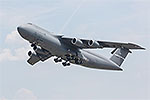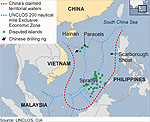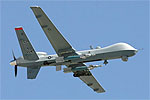January 30, 2017 Military Aviation News

01/30/2017
Operating exclusively within the US Air Force for nearly five decades, the C-5 Galaxy is still the biggest US military cargo aircraft. When American manufacturer Lockheed built it in 1969, it was also the largest aircraft in the world. Measuring a whopping 250 feet long (76m), 223 feet across (68m), and 65ft tall (20m), this monster can easily swallow up two M1 Abrams tanks, six Apache helicopters or ten light armoured vehicles in its hold, and then transport them up to 5,000 miles (8,000 km).
(Read More...)

01/30/2017
In 2009, the U.S. Navy finally began construction of the first new type of aircraft carrier in nearly thirty-five years. Named after former president and naval aviator Gerald R. Ford, the USS Ford fully takes the nuclear supercarrier into the twenty-first century. The technological innovations built into the new ship, while causing the inevitable delays involved in building a first-in-class vessel, will keep the Navy’s unique fleet of super flattops the largest and most advanced in the world.
(Read More...)

01/30/2017
Since the 1990s, China has insistently waged a slow and deliberate imperial war of territorial expansion in the South China Sea. "Imperial war" is the apt description. China exhibits classic imperial ambition. Using economic, diplomatic and military muscle (camouflaged by propaganda), Beijing adds territory to its imperial dominion at the expense of less powerful neighbors.
(Read More...)

01/30/2017
A U.S. Special Operations member died of injuries suffered during a weekend raid against al-Qaida militants in Yemen, the military said Sunday. Three other American troops, members of a Navy SEAL unit, were wounded in the operation on Saturday against members of al-Qaida in the Arabian Peninsula. The militant organization has remained a potent threat amid an extended civil war in Yemen.
(Read More...)

01/30/2017
The U.S. Air Force wants drones that can be refueled in midair by other drones. The reason is simple. While drones like the RQ-4 Global Hawk can stay in the air for more than thirty hours without getting tired, bored or feeling the urge to urinate, even an unmanned aircraft needs to refuel sooner or later. That means the drone must interrupt its mission to return to base, or a manned tanker aircraft will have to fly to where the drone is to refuel it.
(Read More...)
All Articles